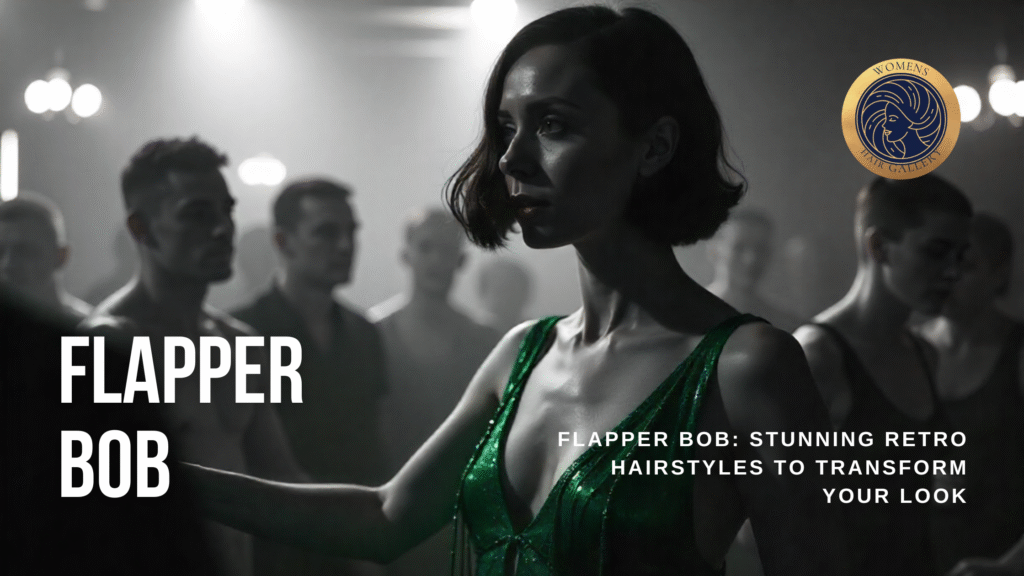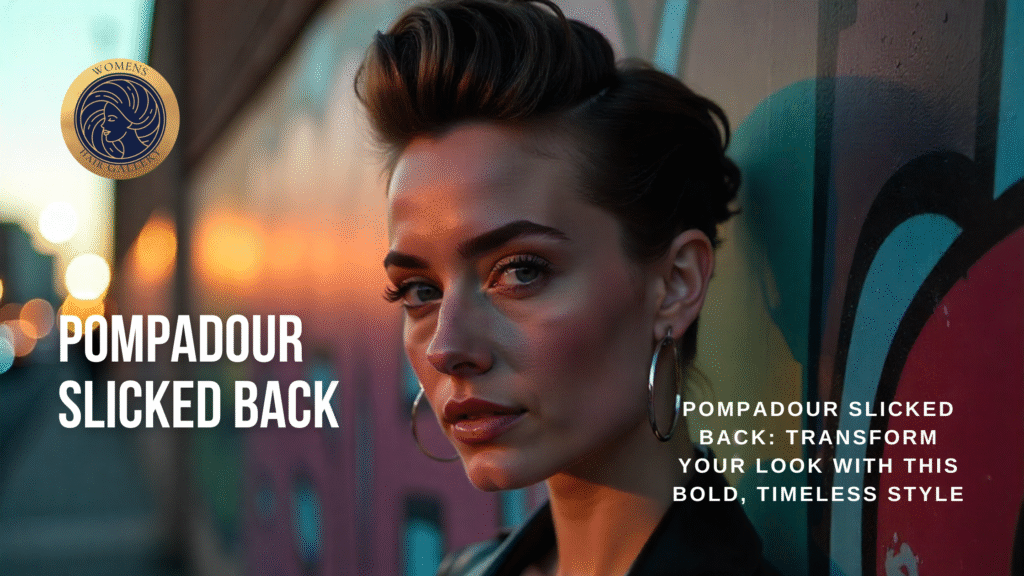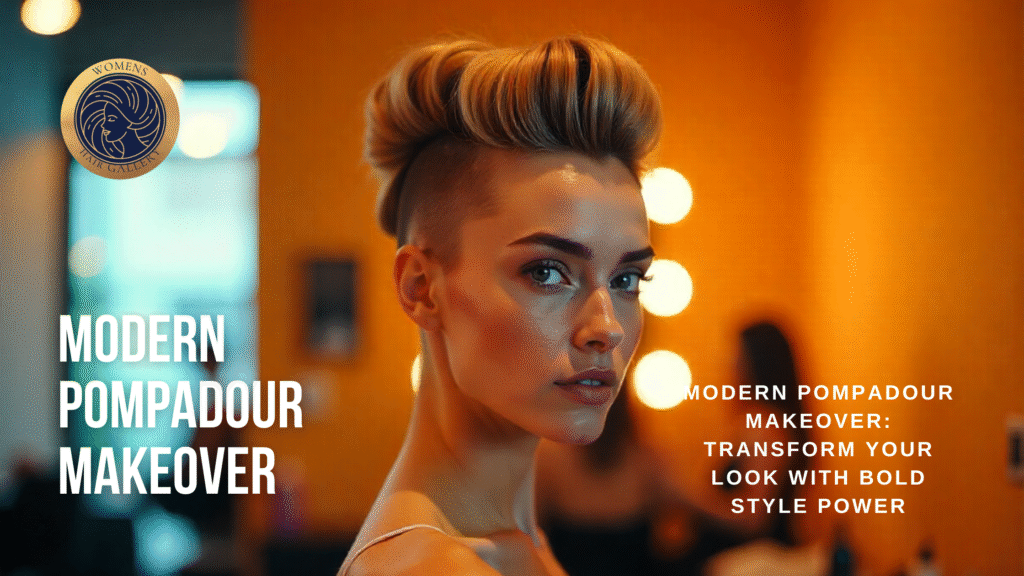Table of Contents
Introduction
Go vintage with the Flapper Bob, an exquisite vintage hairstyle that continues to leave a sense of amazement in fashion enthusiasts today. The Flapper Bob, which originated in the 1920s, has been a symbol of being bold, independent, and glamorous, and remains a traditional choice amongst the women who desire to make a trendy statement. It is not just a haircut of nostalgia, but it is a haircut of making yourself look like a cool, sophisticated, and multi-purpose hairstyle that suits both modern and retro fashion.
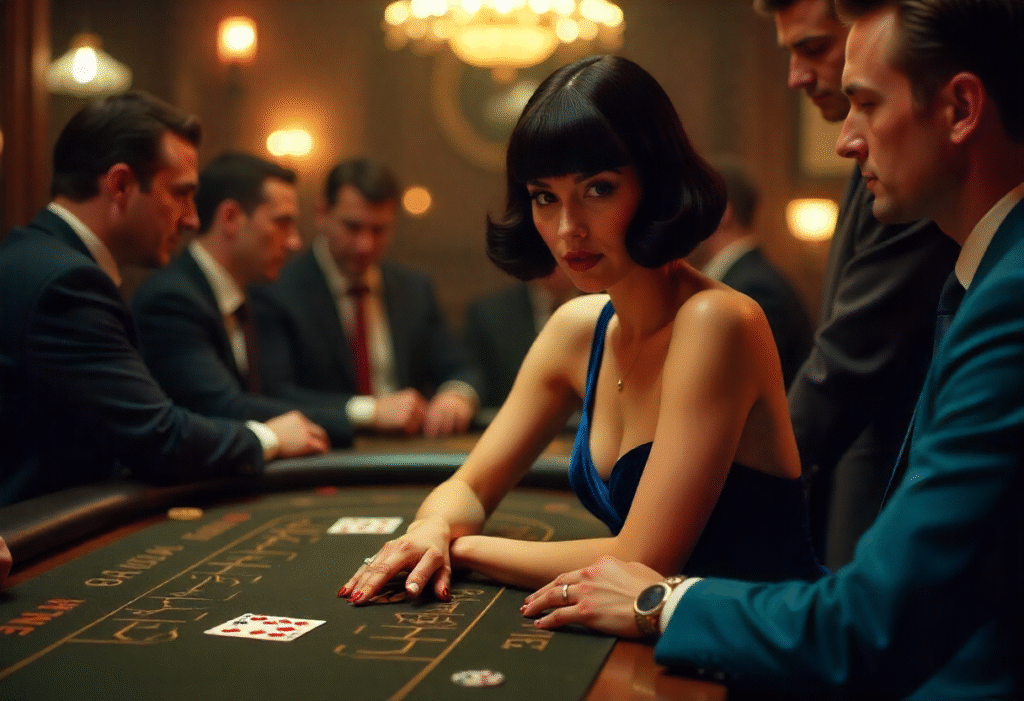
In this guide, we will discuss all the details of the Flapper Bob, such as its history, its most recognizable elements, and the variations that will fit various face shapes and hair types. You will also discover how to style, how to maintain, and celebrity inspiration in order to effortlessly rock this retro hairstyle. The Flapper Bob is the best hairstyle that can instantly give you a fancy appearance and have heads falling on you wherever you go, no matter whether you want a sleek, sophisticated appearance or soft, vintage waves.
What is a Flapper Bob?
Flapper Bob- This is a short, cool hairstyle that was a celebrity of the 1920s because of its straight lines, sharp edge, and often shaved sides. It is also defined by its small length- usually at the jawline- and it can contain straight-across cuts, slight waves, or even gentle curls, so it is versatile and fits a range of hair types.
Historically, Flapper Bob evolved into a symbol of rebellion and independence in the twenties. The style of haircut was taken up by women in order to avoid the traditional long hairstyle of a hair cut because it demonstrated self-confidence, modernity, and freedom. Its simplicity, glamour, and ability to transform an ordinary look into the bold fashion statement that it is are its classical aspects.
The Flapper Bob continues to feature among the ladies who want to wear something with the vintage style, yet a contemporary touch. It is a versatile hairstyle that complements casual and glamorous clothing, and as such, is a classic hairstyle that you can never get bored with.
Why the Flapper Bob is a Fashionable Choice
The Flapper Bob is an aggressive, cool, and simultaneously lifts your style at first glance. Its straight edges and the formal shape give it an appearance of a high level of polished sophistication, and yet, with a bit of vintage flair, soft waves or finger waves can be added. It is an excellent haircut among women who fancy a bold hairstyle that is current and eternal.
One of Flapper Bob’s strengths is is versatile as it can be used on a very wide range of face shapes: oval, heart-shaped, square, and round, and does not smooth out the natural features. The celebrities and influencers have also revived sleek red-carpet bobs and modern asymmetrical twists, which means that the Flapper Bob can be defined as as stylish as it was nearly a century ago.
Variations of the Flapper Bob: You Must Try
The Flapper Bob comes in a number of varied models to suit personality and occasion. The conventional straight-across bob is sleek and smooth in appearance and is adaptable in both a workplace and casual atmosphere. Vintage feels nice, then the wavy, or rather finger-wavy, Flapper Bob has some soft curves that would be observed in the 1920s.
With the dynamic movement and the modern feel, Flapper Bob (angled/ asymmetrical) is a good choice to be offered to those who require a modern advantage. Other factors include length- short Flapper Bobs are more daring and bold, and longer ones are more flexible in how to wear waves or curls. The right variation can ensure that your Flapper Bob also fits your face shape, personal style, and the kind of impression you want your haircut to create.
Check Out: Modern Pompadour Makeover: Transform Your Look with Bold Style Power.
How to Choose the Right Flapper Bob for Your Face Shape
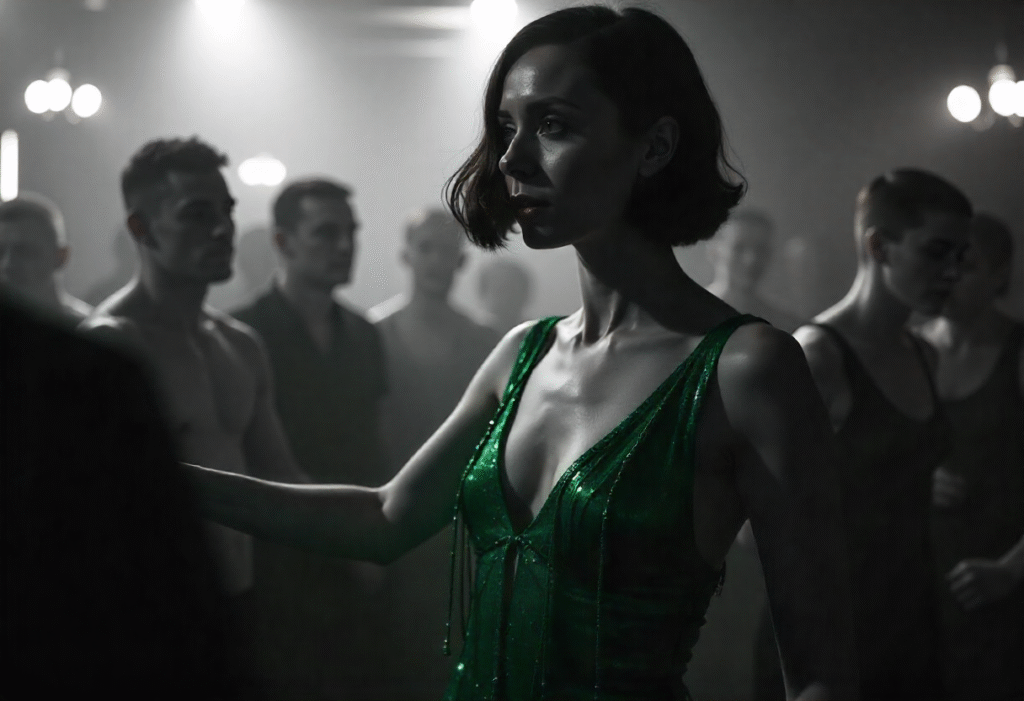
The major step in selecting the right Flapper Bob is to be aware of your face shape. Having round faces, use a bob with round curves or longer strands slightly so that they give the effect of length. Oval faces are versatile and may accommodate almost any form Flapper Bob as a sleek straight cut or vintage wavy hair. Square shapes are popular with gentle curvy lines or finger waves that smooth out hard jaw lines and bobs that make the chin round or side waves.
You may have your Flapper Bob to suit your own features, and to become the best of you by lengthening, waving, or curling your bob. Even simple changes in your style, like curling or even adding some layers, can increase the level of symmetry on the face and provide it with a smooth, attractive look that looks exactly like you.
Styling Tips for Your Flapper Bob
A few styling routines are not very complex but allow keeping the Flapper Bob in good condition and fresh and retro-chic. There can be brushes or combs to make the straight bobbed lines of hair smooth every day, or fingers to create soft waves. They can also be used with heat-free styling, such as pin curls, foam rollers, etc. can be left to dry on your hair overnight and leave it to do its thing to form vintage waves without ruining your hair.
The right products would be of assistance. To hold the straight bob in its sleek form and to shape and hold any waves or finger curls, easier sprays or shine sprays may be used. Quick fix stylistic devices that include placing one side behind the ear or placing a vintage hairpin or Pin will immediately provide the appearance that gives one a classy retro-ready look that gets one to turn heads on a daily basis.
Maintenance Tips for a Long-Lasting Flapper Bob
It requires maintenance to keep your Flapper Bob in good and fresh condition. Cutting after 4-6 weeks will help maintain the shape of your bob, prevent split ends, and line them straight. Regular hair care products (including deep conditioning), washing tenderly, and using anti-frizz antidotes will make your hair smooth and healthy without losing texture.
Your Flapper Bob will have to be kept up as well, and that is also accomplished through seasonal adjustments. In humid conditions, consider products that reduce frizz, and during cold or dry seasons, bring extra hydration or leave-ins in order not to end up dry. And with hair care and trims, your Flapper Bob will be retro-prepared with a fresh look all through the year.
Celebrities Who Rock the Flapper Bob
The Flapper Bob is difficult to find more inspirational than the other pieces of clothing and is a favorite celebrity wear in both its vintage and contemporary editions. Taylor Swift, Marion Cotillard, and Zoe Kravitz are only a few celebrities who have embraced the smooth straight bob or the wavy and finger-wave, which proves that the outmoded style can fit various characters and face shapes.
Such appearances of the celebrities can inspire you by observing the cut, wave formations, and the ways they use them in their styling. An excellent way of making these fashions work with your hair type and personal style is to make such an adjustment so that you have a Flapper Bob that would feel original, contemporary, and chic with no effort.
Flapper Bob for Every Occasion
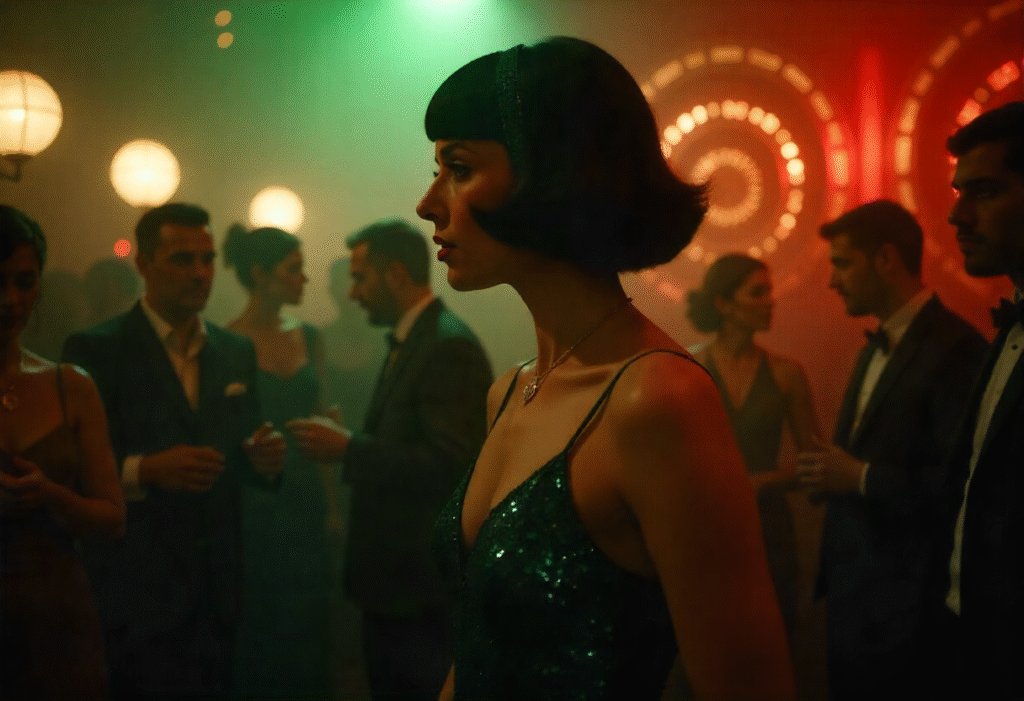
Flapper Bob is so versatile and may be used in different events. A smooth, straight-cut Flapper Bob is sure to give one confidence and a sense of refinement to be worn in a professional, work-friendly environment. The versions of party styles are glam and are worn in soft waves with finger waves or small accessories to give it a vintage-inspired and red-carpet-ready appearance.
Wearable daily, all day, you have the opportunity to play with the fashionable options, like side-swept bangs, a wavy cut, or hair-pinning to get your Flapper Bob looking fresh and current. It is so flexible that whether it is a formal outing or a night out, or even a daily commute, the Flapper Bob will be a cool and attractive choice.
Conclusion
These are not merely a retro hairstyle because the Flapper Bob is a hairstyle statement bold and stylish but no more. Invented during the 1920s up to the present day, this hairstyle continues to be in demand among women who want to have a classic hairstyle and, at the same time, a style that is fashionable. The fact that it can be used on all faces also allows the hair to fit every type of hair and personal style, and thus is a personalized style of hair that can be used to match your personality.
You want to go to work as a sleek, straight Flapper Bob, some finger waves in the evening, or a funky, textured twist in casual clothes. This hair styling technique will certainly leave you feeling that much better and more confident. With the right upkeep, hairstyling, and aping the celebrities who have embraced the style, your Flapper Bob can be kept pretty and easy to make retro.
Being a Flapper Bob does not simply mean you have a haircut, but you can express yourself, enjoy your style, and make a statement of vintage and at the same time elegant chic. This permanent hairdo transforms your looks immediately, and it proves the truth that the glamour of the past never goes out of fashion.
For more info: Click Here.
FAQs About Flapper Bob Hairstyles
Q1: What sorts of hair would best suit a Flapper Bob?
The Flapper Bob suits most hair types, including straight hair, wavy hair, and slightly curly hair. Straight hair has clean lines, and sleek hair has a soft vintage appearance. A curly-haired Textured Flapper Bob may also be crafted, but more smoothing or molding may be needed. It is all about the selection of a variation that will be free of charge to your natural texture and retain the traditional bob shape.
Q2: How do I make a vintage Flapper Bob at home?
To do one at home, a vintage Flapper Bob, start with a chin-length bob as your hair or a jawline bob. Use non-heat styling techniques such as finger waves, pin curls, or rollers to create soft jean elegant waves. And a light-hold styling gel or shine serum to help hold the structure together and to acquire that polished retro appearance. Even though it may be done without professional trims, professional trims will ensure that the lines are straight and the finish is made to look perfect.
Q3: How do I maintain my Flapper Bob in top shape?
In order to maintain the Flapper Bobs in good condition and prevent split ends, one has to trim the hair regularly (4-6 times a year). Use anti-frizz, hydrating conditioners, and shampoos to keep the hair shiny and low flyaway. To preserve the waves at night, wrap the waves up in a silk scarf or pillowcase, especially in the wavy or finger-wave hair. Alternating seasons, like adding more moisture in dry seasons or applying products that make your hair frizz in the wet weather, are also a terrific method of keeping your Flapper Bob shiny, colorful, and retro every season.

